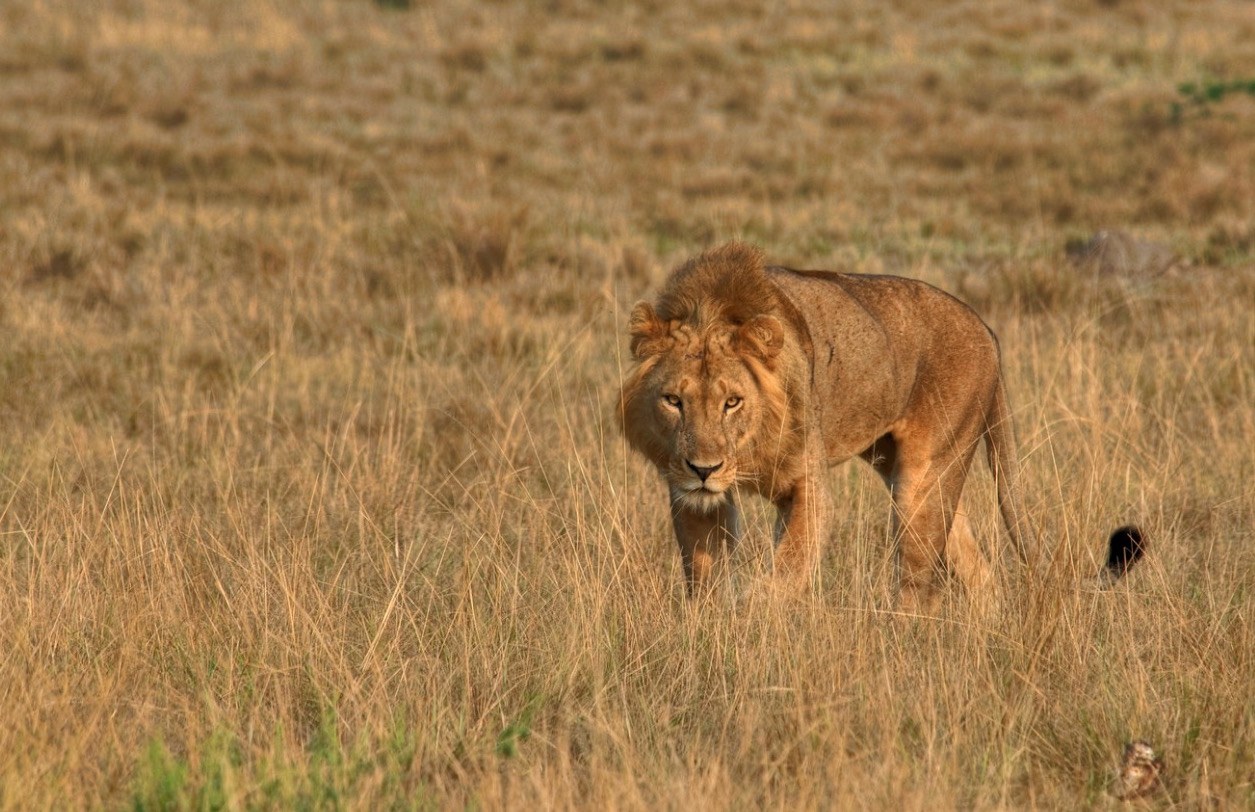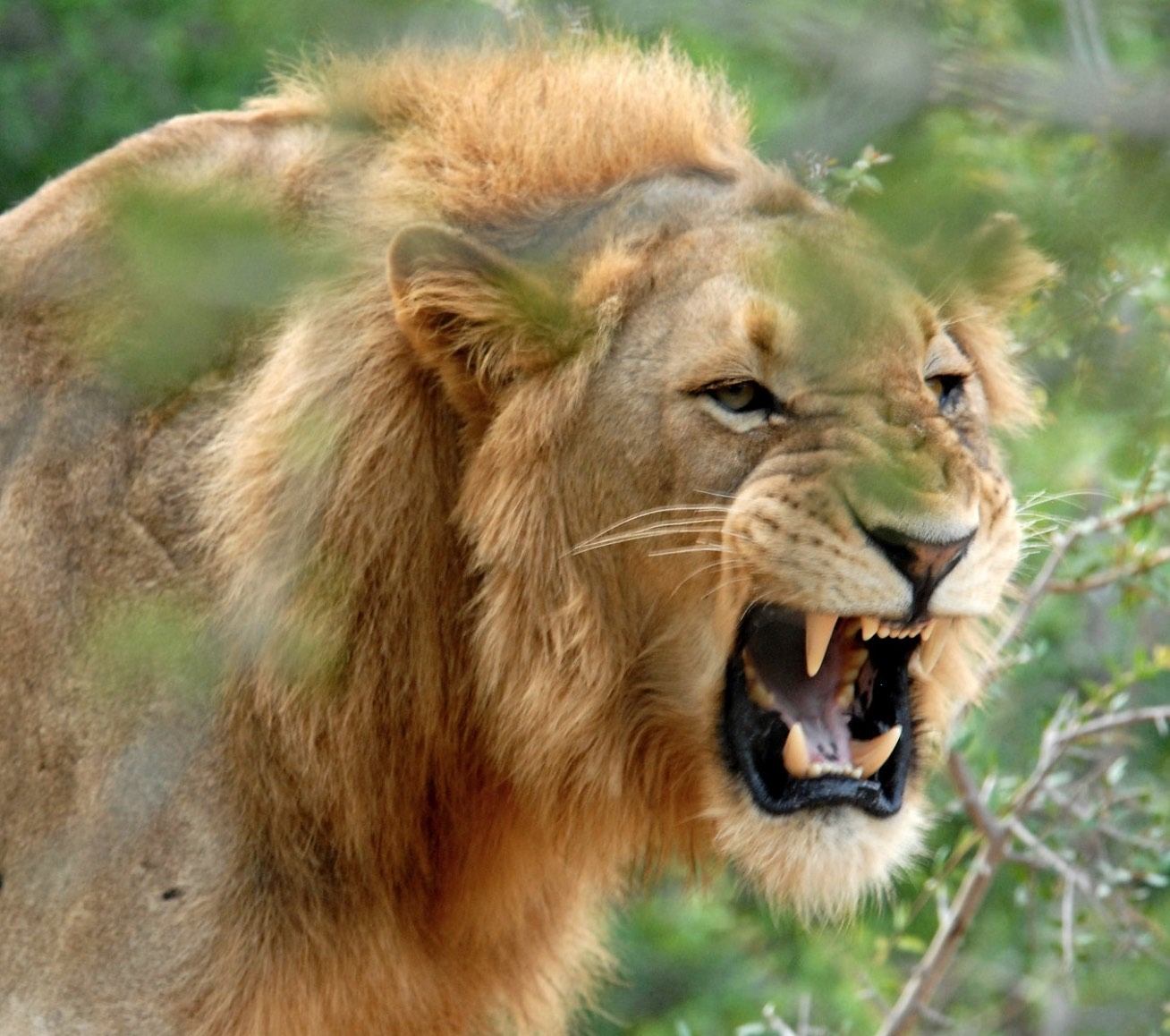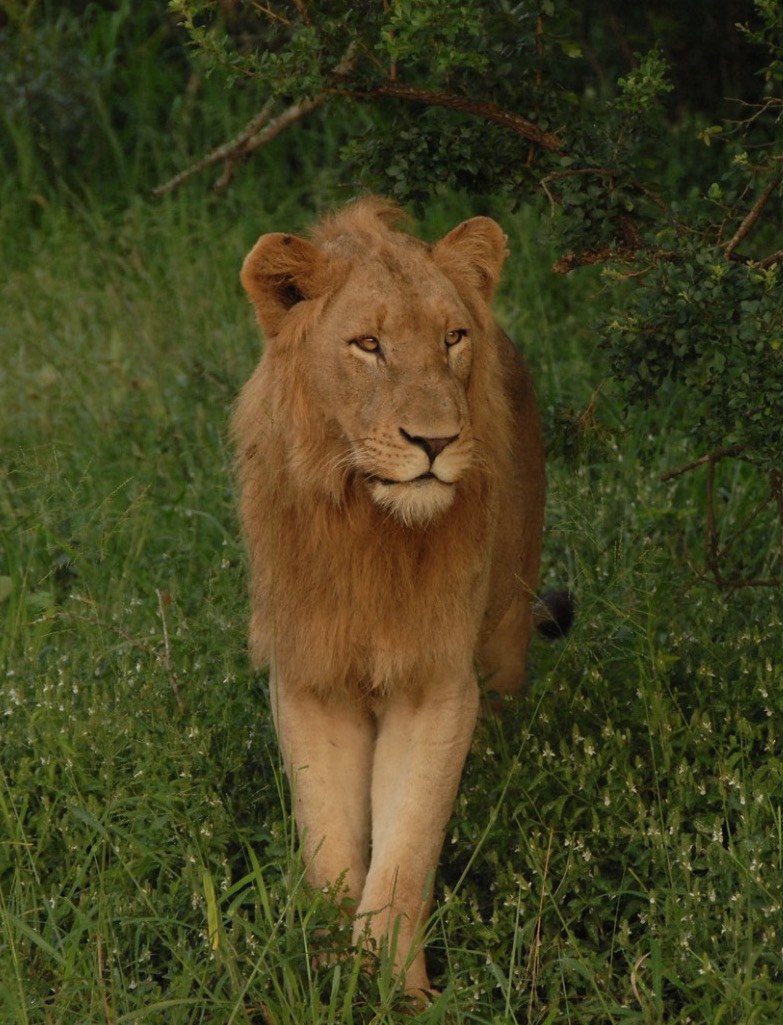by Bill Murray
 Just about everyone who visits the famous South Luangwa wildlife park drives through Mfuwe, Zambia. A mere wide spot in the road, a trifle to tourists, Mfuwe holds a fearsome, searing memory. It will forever be known for the Man-Eater of Mfuwe, a lion that killed six people over two months in 1991.
Just about everyone who visits the famous South Luangwa wildlife park drives through Mfuwe, Zambia. A mere wide spot in the road, a trifle to tourists, Mfuwe holds a fearsome, searing memory. It will forever be known for the Man-Eater of Mfuwe, a lion that killed six people over two months in 1991.
There are more famous man-eating tigers than lions in the literature. Tigers and people live in closer proximity in India than lions and people in Africa. I’ve seen an estimate of as many as 10,000 people killed by tigers in India in the nineteenth century.
The Champawat Tigress, the most infamous Panthera tigris, was said to have killed 436 people before she was killed in Nepal, then part of British colonial India, in 1911. After a spree of terror, hunters having failed to kill her, the authorities ultimately called in the Nepalese army. In Kenya’s Tsavo Park two lions killed perhaps two dozen Indian railroad construction workers in 1898, halting the colonizing Brits’ project to connect the port of Mombasa with the interior of British East Africa.
But the Mfuwe man-eater was no colonial-era killer. Its attacks occurred less than thirty years ago, thoroughly terrorizing an overgrown village of scarcely a thousand a spare 60 miles west of the border with Malawi, oriented toward the Malawian capital, Lilongwe. Lusaka, the Zambian capital, is 300 miles away.
 The night of the first attack the killer struck two boys walking along a road at night. One escaped, but responding game rangers found only clothing and fragments of the other boy’s skull. A few days later a lion crashed through the door of a woman’s rondavel on the edge of the village. The second victim.
The night of the first attack the killer struck two boys walking along a road at night. One escaped, but responding game rangers found only clothing and fragments of the other boy’s skull. A few days later a lion crashed through the door of a woman’s rondavel on the edge of the village. The second victim.
The third attack was nearly foiled by an edgy ranger, who fired his gun, but the victim, a young boy, was bitten and died of his wounds. Three more attacks were to come. People began to believe this was no ordinary lion, but a devil or a medicine man taking the shape of a lion.
•••••
Today the Mfuwe lion is stuffed and on display at the Field Museum in Chicago. 3.2 meters long, 1.2 meters at the shoulder and estimated at 249 kilos, it was male, and it was mane-less, similar in that way to the man-eating lions of Tsavo.
At first the lack of a mane led people to assume they were after a lioness. Early in the Mfuwe terror, people believed they’d got the man-eater, when a Japanese hunter brought down a lioness. But then the man-eater entered a woman’s hut and stole a bag of laundry, taking the bag into the village and roaring over it. This lion was clearly male.
•••••
Wayne Hosek wasn’t the first to try to kill the cursed thing. Other professionals, including the Japanese hunter, tried before Hosek.
Remarkably, as a child the man who ultimately brought down the Mfuwe man-eater studied the man-eaters of Tsavo, also on exhibit at the Field Museum. Wayne Allen Hosek was born in Chicago.
He says the Field Museum has always been one of his favorite places on earth. As a boy, Hosek spent days in front of the Tsavo lions, trying to imagine confronting the real thing, as he imagined it, with nothing but a few seconds separating him from their wrath.
Hosek’s battle with the Mfuwe man-eater stretched across the first nine days of September, 1991. First he met the hunter who had shot the lioness. Everyone hoped that solved the problem of this particularly evil Panthera leo but days later, two days before the hunter returned home to Japan, the sixth victim was attacked.
Hosek’s early description, a pdf in the Field Museum’s archives, is incomplete, reading as an early draft of an incomplete story (Hosek later wrote a book.). There’s even a place in the .pdf where his narrative reads “SECTION TO COME.”
In that section perhaps Hosek would have introduced us to his hunting companions, for later we are assumed to know “Charl” (Charl Beukes, another professional hunter), who was with Hosek the night the animal was killed.
Hosek visited villages where the lion had been spotted, talking to people, learning the cat’s behavior. The killer had dragged the last victim, a woman named Jesleen, from her rondavel in the Luangwa valley village of Ngozo.
 The day after Jesleen was killed the lion walked into her home in the middle of the day and took a white bag with some of her clothing. People frantically beat on pots and pans to scare the lion away. It played with the bag like a cat with catnip. They found the bag in a dry river bed a mile from Jesleen’s house.
The day after Jesleen was killed the lion walked into her home in the middle of the day and took a white bag with some of her clothing. People frantically beat on pots and pans to scare the lion away. It played with the bag like a cat with catnip. They found the bag in a dry river bed a mile from Jesleen’s house.
Village women used to wash their family’s clothes there by walking to the middle of the riverbed and digging down to water. Hosek writes, on this day “(e)ven the hornbills lounging in the riverbed seemed to be giving the bag a wide berth.”
Phillip Caputo, in Ghosts of Tsavo, writes that at this point Hosek’s trackers wouldn’t look him in the eye, two of them wouldn’t look at him at all, as if they resented his getting them into all this.
The elders decided Jesleen’s bag was bewitched and the lion was a sorcerer or a demon, “or at least demon possessed,” and villagers would not go near the bag. Authorities instituted a curfew at 5:00 over an area of some 65 square miles.
The hunters laid bait near the bag, hoping to keep the lion near, and retired to camp. Hosek’s companion Charl counseled, “Remember to follow-up HARD as soon as you make your first shot.” Hosek, a devout Christian, woke repeatedly that night, and each time he prayed.
The next day they built a blind using bamboo and elephant grass cut by villagers. Charl shot a small hippo and laid a haunch in the riverbed. They spent an uneventful night. The lion didn’t take the bait, but by day the hunters found its tracks a scant fifty feet from the blind.
The following day the hunters holed up in the blind around 3:30. Hosek describes “blind sleep” – “my eyes were closed, but my ears seemed to have acquired an ability to listen to each and every sound.”
Again they didn’t see the lion, but by now, “(t)he man-eater had become the center of my life’s purpose.”
Too many ineffectual cloistered hours led to a new strategy. They would build a new blind elsewhere, hang bait and leave the blind empty, in hopes the lion would get comfortable at the absence of its stalkers. They arranged for others to build the blind so the cat wouldn’t get the scent of the hunters.
Charl selected the site. He felt that the lion was clever enough never to let the hunters spy him standing still, and that it would be moving whenever it allowed them to see it. Gauging their being shut away in a blind against a lion on the prowl, he thought ultimately they would have no more than 2.5 to 3 seconds to take their shot.
 When the hunters made their way to the new blind they saw that the man-eater had torn off part of the bait and eaten it in a footpath used by villagers. As Hosek tried to take a photo of the lion’s tracks, his camera broke.
When the hunters made their way to the new blind they saw that the man-eater had torn off part of the bait and eaten it in a footpath used by villagers. As Hosek tried to take a photo of the lion’s tracks, his camera broke.
As a Christian, he took it as “possibly a sign from the Lord.” The villagers saw the lion as a witch or a demon, after all. They had their spirituality. Hosek had his.
On the day of the lion’s death, the hunters entered the new blind, again about 3:30. In less than an hour Charl spotted movement in tall grass. The lion approached in line with the trunk of a tree, masking its visibility.
Hosek writes that he was “in a quick stride, almost trotting.” Hosek shot the lion below and behind its left shoulder, and it was dead. One of the trackers sang the Kunda tribal lion song and villagers converged on the place, spitting on the lion, beating it with sticks, and lit celebratory fires.
•••••
This is the story from Hosek’s memoirs, but I have found out a little more. Some time ago I asked Adrian Carr of the Norman Carr Safaris clan, about Hosek’s account. Carr figured in the man-eater story, but downplayed his role. He sat up on watch for the lion one night, saw it, but never managed to get a shot.
Here is Carr’s perspective:
“I had got involved because one of my workers insisted that I come and see something.
“He had got up in the night and gone outside for a wee. The lion had tried to catch him but somehow he got back in to his hut – the lion followed him in and he miraculously managed to get back out again – though the door. All this in the pitch black with all the terrifying growling. It was a small mud hut without windows and luckily he had been alone. The doors are on the inside opening inwards – so when he got back out he pulled the door closed and the lion was stuck inside. This is what he wanted me to see. It was like a bomb had gone off inside – the lion had totally destroyed everything including the roof from where he had eventually got out.
“I then put a bait up nearby (a hippo haunch) and the same lion fed on it that night – he had a big distinctive track.
“I decided to sit up for him the next night.
“My plan was to commandeer one of the cylindrical grain storage bins (kokwe) around the village as a blind or shelter. It was September (I think) and the grain storage bins were mostly empty. Traditionally they are made from split bamboo and woven together very tightly. They are quite heavy, very strong and I felt (in the daylight) impregnable. I would plonk myself down on the ground 30 yards from the bait – the basket, 6 feet in diameter and 8 feet high would be placed over me, I would cut a little window to shoot through and await developments….
“I was a bit late arriving that afternoon, – a small crowd gathered. I dispatched 5 strong men to go and collect a kokwe and received some quizzical looks…
“I watched as one guy sauntered up to the kokwe and effortlessly lifted it up above his head!
“Oh dear…. !! Made of millet stalks instead of bamboo! That’s like pith and balsa wood with no strength at all.
“Too late however to do anything else if I was to retain my casual demeanor and reputation of aloof imperturbability and disdain for the magical beliefs that are always associated with man-eating lions.
“Privately, of course, I was seriously doubting the wisdom of the whole enterprise!
“He came soon after midnight. Or at least that’s when I first became aware of him. I could hear his footfall circling my paper-bag fortress. My two heavy rifles, three flashlights and a handgun were little comfort. It went quiet for a bit and then I heard him feeding on the bait. I let him settle in to the feeding for 20 minutes and then put the light on him. I still have the mental image of him standing up on his hind legs, very big and tall, maneless and pale. I was ready to shoot but the instant the light hit him he dropped and was gone. He never came back and Charl and Wayne got him two nights later.”
•••••
Adrian Carr graciously shared his story by email, kindly arranged by Norman Carr Safaris, which is now a company called Time and Tide. My thanks to the Carr family and Adrian Carr.
Photos © the author from EarthPhotos.com.
